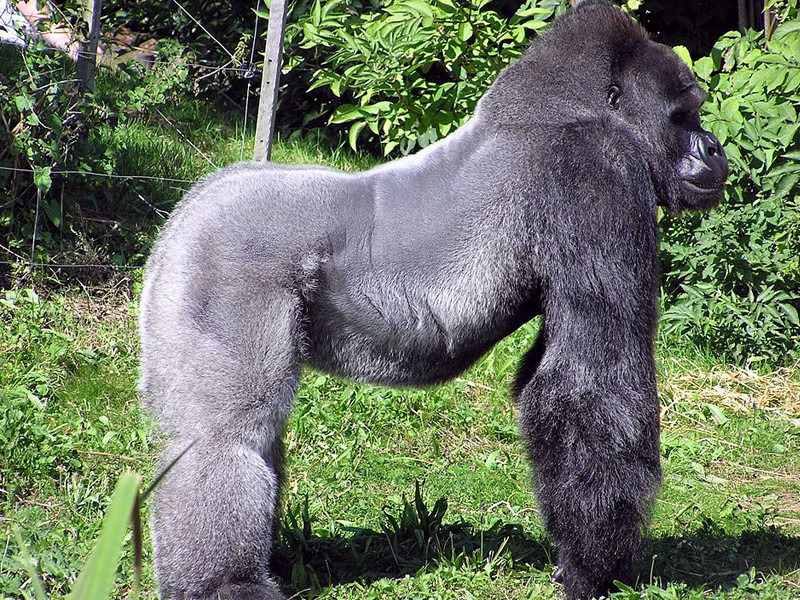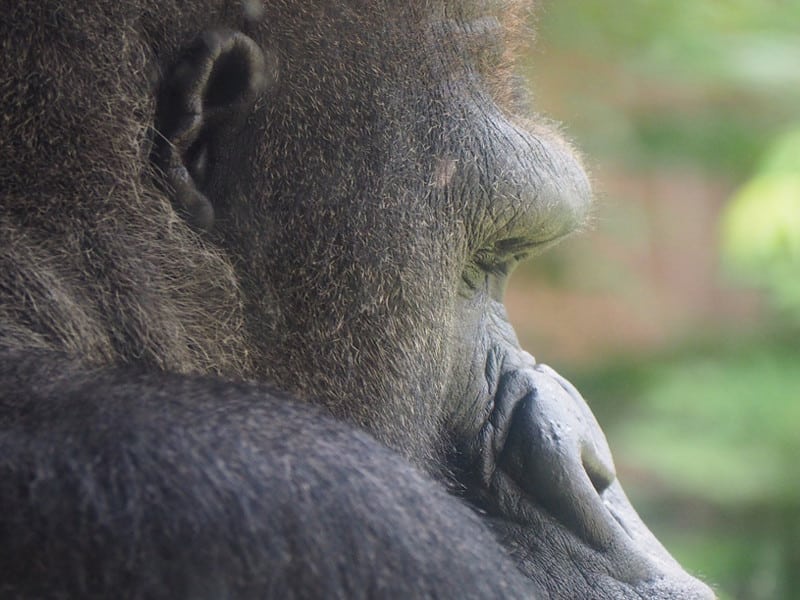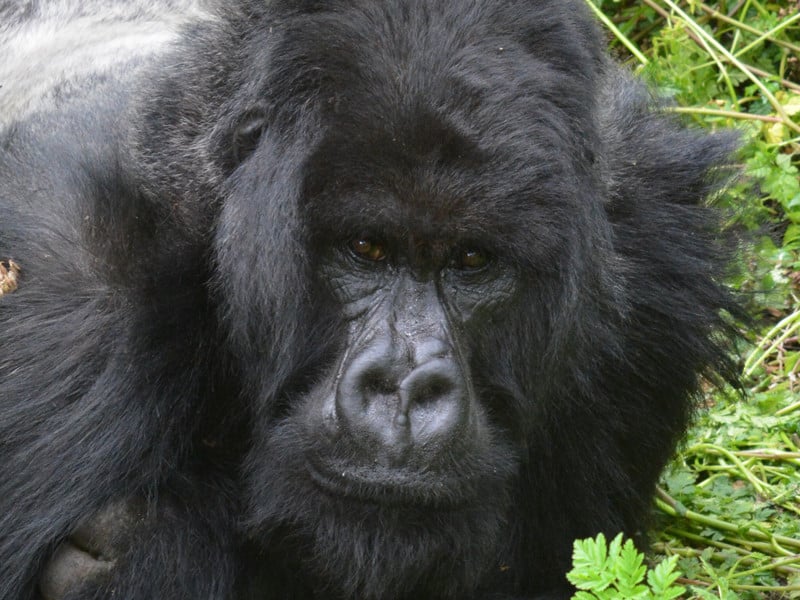Photo taken by: Julielangford.
Table of Contents
ToggleGorilla gorilla diehli
This subspecies of the western gorilla is unfortunately known for being the most threatened of all subspecies. It was initially considered a new species in 1904 when it was named Gorilla diehli, but its lifestyle was unknown for many years until further research made in the 1980s produced new interesting facts about its life. Despite being considered as a species before, new information led to consider them as a subspecies of the western gorilla.Order: Primates Family: Hominidae Genre: Gorilla Species: Gorilla gorilla
Description
The appearance of the Cross River gorillas is not very different from the other subspecies. At first glance, their body is robust and powerful, with a slightly elongated head and a pronounced brow ridge. However, their skull is slightly shorter than the western lowland gorilla (Gorilla gorilla gorilla), and their mouth is not as big as that subspecies. They have teeth, hands, and feet apparently shorter than the western lowland gorilla, a broad nose with wide nasal passages, opposable thumbs, and fingers. Their skeleton is sturdy, with straighter vertebrae than that of humans. There is sexual dimorphism: males are taller and heavier than females. On average, they are 1.65 to 1.75 meters height and weigh between 140 and 200 kilograms. Females reach an average height of 1.40 meters and a weight of about 100 kg. Both genders have a dark fur over the whole body except the face, ears, hands and feet.Is the most threatened of all subspecies.
Distribution and habitat
This subspecies is the world’s strangest gorilla; rarely seen and with a small population. It lives in a region between Nigeria and Cameroon, just at the Cross River basin. It is, therefore, the subspecies that inhabits the most north and west regions of all. There are populations in the Afi Mountains in Nigeria, the Mbe Mountains in Cameroon, in the Takamanda National Park in Cameroon, and in the Cross River National Park in Nigeria. They inhabit mountainous rain forests and bamboo forests at altitudes of 1,500 to 3,500 meters above the sea level. This subspecies was recorded for the first time on video in 2009. The Cross River gorilla is a shy animal, which avoids areas populated by humans. Besides, they need to live in areas with abundant vegetation to survive.Feeding habits.
Like all other subspecies, the Cross River gorilla (Gorilla gorilla diehli) has a herbivorous diet that includes leaves, fruits, herbs, vines and tree bark. They like fruits very much, but these are only available in the seasons ranging from August to September and November to January. During the times of fruit shortage, the consumption of bark and vines increases. They have long intestines to digest plants, and this is why they have large and rounded abdomen, even bigger than their chest. In general, it is known that other subspecies of gorillas can occasionally add to their diet small insects like termites and caterpillars although there is no evidence that this subspecies does it. One confirmed fact is that the Afi Mountain gorillas prefer the plants of the genus Aframomum during particular seasons.Behavior
These large animals are social and live in flexible family groups with 2 to 20 individual approximately. Initial conclusions suggest that this subspecies has similar social behavior than other gorillas, with groups led by a “silverback” male, which protects females and their offspring and takes important decisions, such as the group feeding and resting sites. The dominant male and 6 or 7 females with their offspring compose family groups of Cross River gorillas. They build nests of branches and leaves on trees or on the ground, where they rest and sleep, in the company of the few individuals of the troop. During the rainy season they build their nests atop a tree to protect themselves from the water, but during the dry season they usually make the nests on the ground, this can be confirmed at least in the case of gorillas under research. They spend most of the day eating to maintain their size and strength, but they also engage in some recreational and social activities such as grooming. In Cameroon, they have been observed using rudimentary tools. Although the other subspecies are mainly peaceful, the Cross River gorilla are aggressive against humans, launching branches, herbs and stones sometimes.Estimations suggest that there are probably less than 200 mature gorillas.




